It’s common to feel tight in the back of the legs, the hamstring muscles, if you sit for prolonged periods of time. Some of us also have tension in the back of the legs that is from neural tension rather than, or in addition, to tight hamstrings.
Neural tension is felt when the body has restrictions that limit the ability of the nerve fibers to slide and glide.
Similar to flossing your teeth, nerves are happiest when they are able to move freely with good blood supply. If there are mechanical irritations along the path of the nerve (ex: injury, entrapment, chemical disruption, etc) one can experience sensory issues (pins and needles), pain, or weakness.
Physical therapists and other practitioners can test for neural tension to figure out if this could be contributing to pain. For example, glut pain can be caused by a variety of reasons (hip, back, etc). To see if the pain is caused by irritability of the sciatic nerve, the practitioner would put your spine and leg into a position that would lengthen the nerve and look for symptom reproduction.
We can mobilize the nervous system (just like we do the muscular system) to offer our nerves nourishment and mobility. This active mobilization helps the nerves and their surrounding fascia slide and glide.
What is active hamstring mobilization?
Active hamstring mobilization can be used as a sciatic nerve glide and an active warm-up for the back half of the body.
Fascia, the connective tissue web in the body, is continuous in different planes in the body. One plane of fascia starts at the sole of the feet, up thru the back of the legs, up the back and ends up at the scalp. This plane (superficial back line) is mobilized in the active hamstring mobilization.
First we’ll learn the basic mechanics of the movement and then we will pair it with pelvic floor breath and imagery.
I first learned this active warm-up when I was working as a physical therapist backstage at the Radio City Christmas Spectacular. The Rockettes are guaranteed an active warm-up before jumping into a kick-line during rehearsal after a break. This is critical for injury prevention and recommended over static stretching.
It is a great alternative to and/or warm-up for Downward Facing Dog as well!
Practice the active hamstring mobilization
The active hamstring mobilization has two parts to it: first squat then extending your legs as you raise your rear end. This lengthens the hamstrings and other muscles in the back of your legs, like the gastroc and soleus.
Movement 1
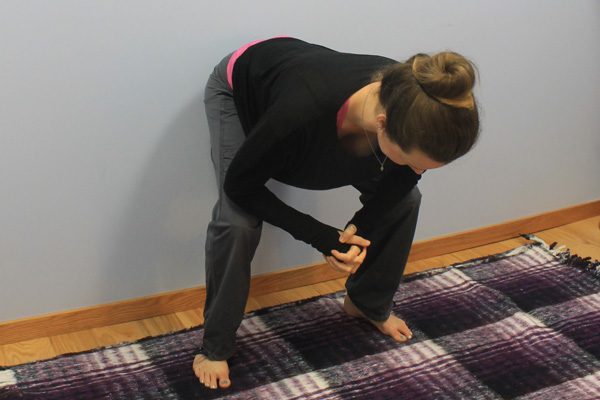
- Come into a squat position with your knees bent and feet apart.
- Clasp your hands and rest your elbows just above your knees. An alternate for this is having your palms resting on your thighs.
- Inhale
Movement 2
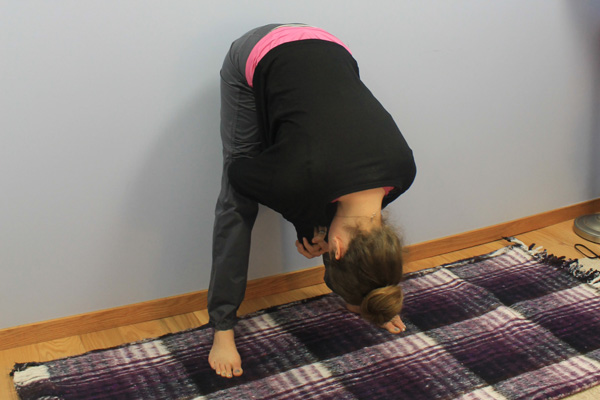
- Exhale as you start to lift your rear end towards the ceiling.
- Your elbows will remain in contact with your legs and hands will stay clasped. This means your knees may not straighten the whole way and that is 100% okay!
- Notice what changes after 5- 10 reps…more ease? More range of motion?
Note:
- Most people will want their feet pointing forwards, but this could be different for different bodies.
- Some hip joints will prefer to be slightly turned out.
- The foot position will bias the backs of the legs differently (pulling on the inner and outer hamstrings), so play with what feels best for you.
Pair pelvic floor imagery with your breath
Take this active mobilization a step further with the connection to the pelvic floor.
Let’s review what the pelvic floor muscles do during a breath:
- As you inhale, your pelvic floor muscles and diaphragm both descend towards your feet. This is a lengthening contraction.
- As you exhale, they both ascend towards your head.
If we pair the squat aspect of the mobilization with the inhale, we are encouraging more lengthening of the pelvic floor.
Go one step further and imagine your sitz bones broadening as you inhale.
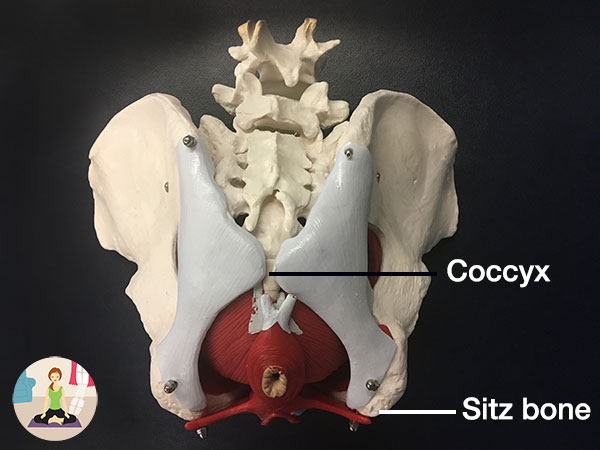
I hope you enjoy this mobilization! Over the years is has helped me and my patients with back, hip and pelvic pain quite a bit!
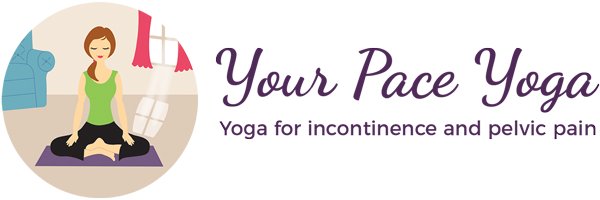
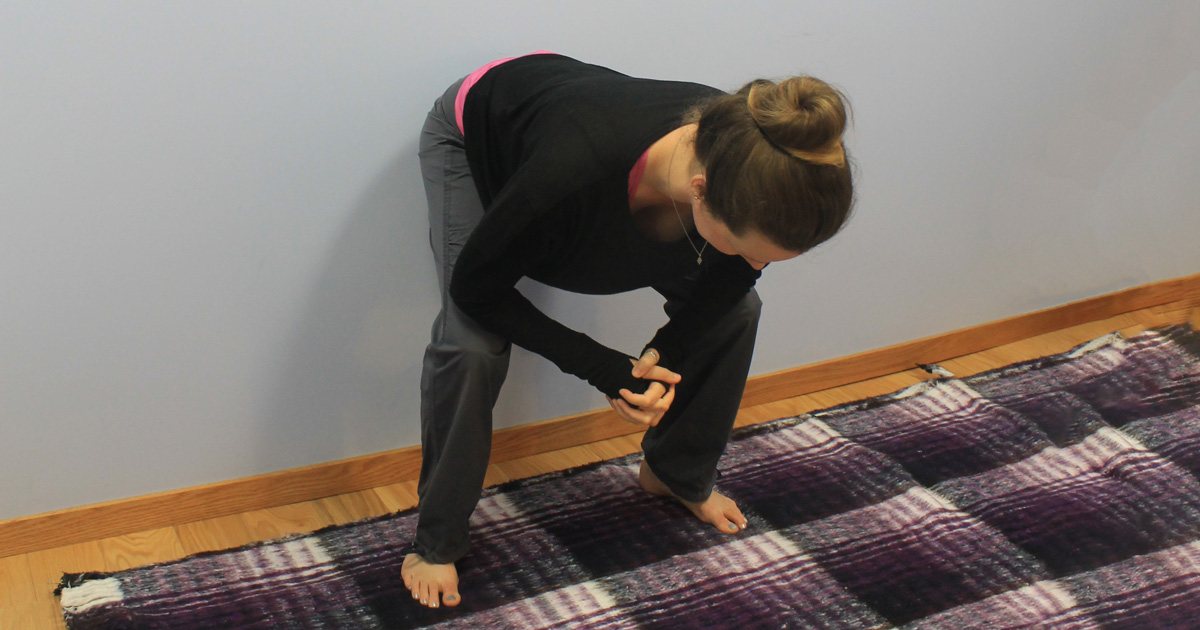
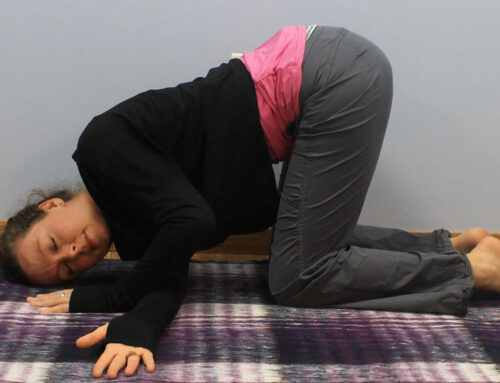
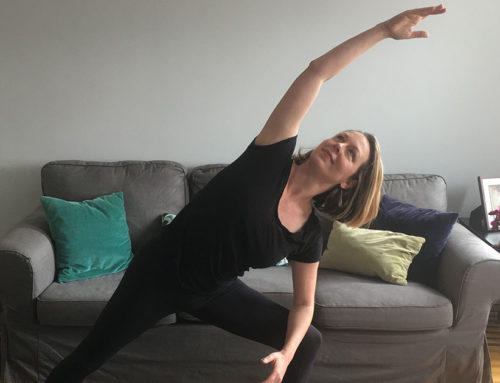
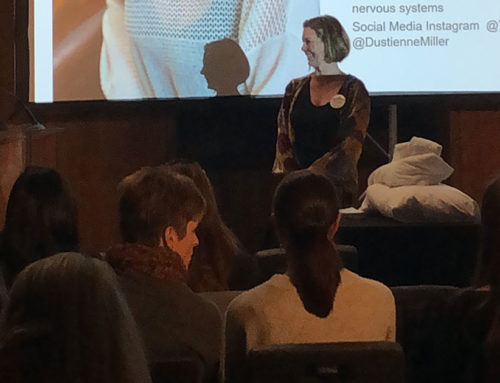
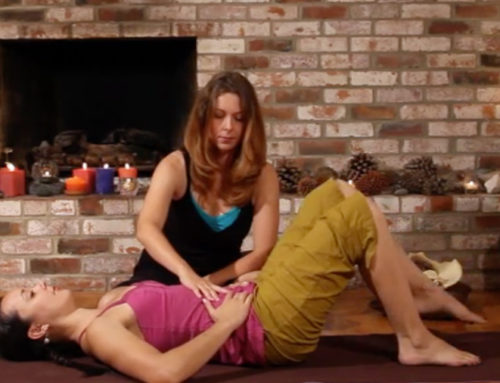
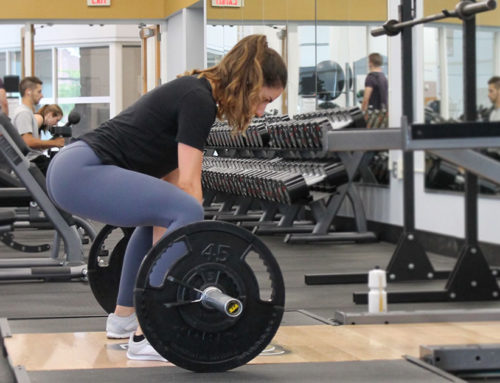
I just wanted comment how amazing this website it. I suffered from PFD for 2+ years as a female athlete and am now relearning how to breath correctly . Thank you so so much
Hi Vanessa,
Thanks for saying hi! I’m so grateful to hear that you have found my website helpful. I’m sorry to hear that you have suffered for PFD for a long time and I hope you feel better asap!
Warmly,
Dustienne